Articles Common Hip Injuries
We have compiled a list of common hip injuries. It is important to accurately diagnose and identify the cause of these injuries as this will direct treatment to ensure the best outcomes.
Common Hip Injuries- Greater Trochanteric Pain Syndrome (GTPS)
The greater trochanter is a part of the thigh bone and can easily be palpated over the side of the hip. Pain over this area is termed GTPS. This can be due to:
- Trochanteric Bursitis, a bursa is essentially a fluid filled sac found in areas of the body where a tendon or muscle rubs over a bone. The function of a bursa is to decrease the amount of friction, if the bursa becomes inflamed it can swell causing compression and pain. Overlying the greater trochanter is the trochanteric bursa. Inflammation can give rise to symptoms such as tenderness over the side of the hip, an inability to sleep on the affected side, pain with sitting cross legged, pain with prolonged activity (i.e. walking) and difficulty standing from a seated position. This is often caused by trauma (i.e. falling onto the side of the hip) or overuse (i.e. running). This condition is most commonly seen in running athletes, older female populations, sedentary individuals and people who are overweight.
- Gluteal Tendinopathy, the tendon of the gluteal muscles inserts onto the greater trochanter. Inflammation and/or thinning of this tendon will give rise to symptoms identical to trochanteric bursitis.
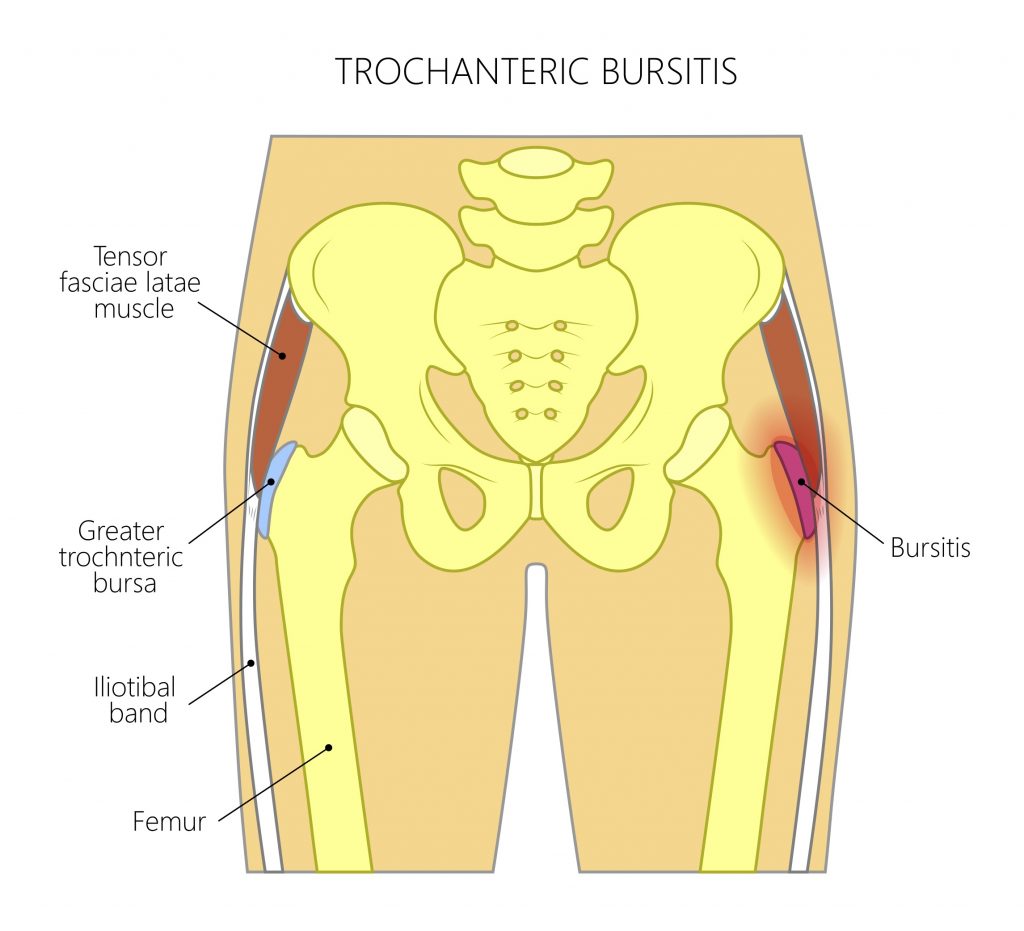
Common Hip Injuries- Iliotibial Band (ITB) Syndrome
The ITB is a thick band of fibrous tissue that runs down the entire length of the thigh. Over the hip, the ITB runs over a large bony prominence. Repeated rubbing can cause inflammation and pain. This is typically an over use condition and seen most often in distance runners. Symptoms can include pain on the outside of the thigh and knee, a snapping sensation, pain during and after activity and increased symptoms running downhill.
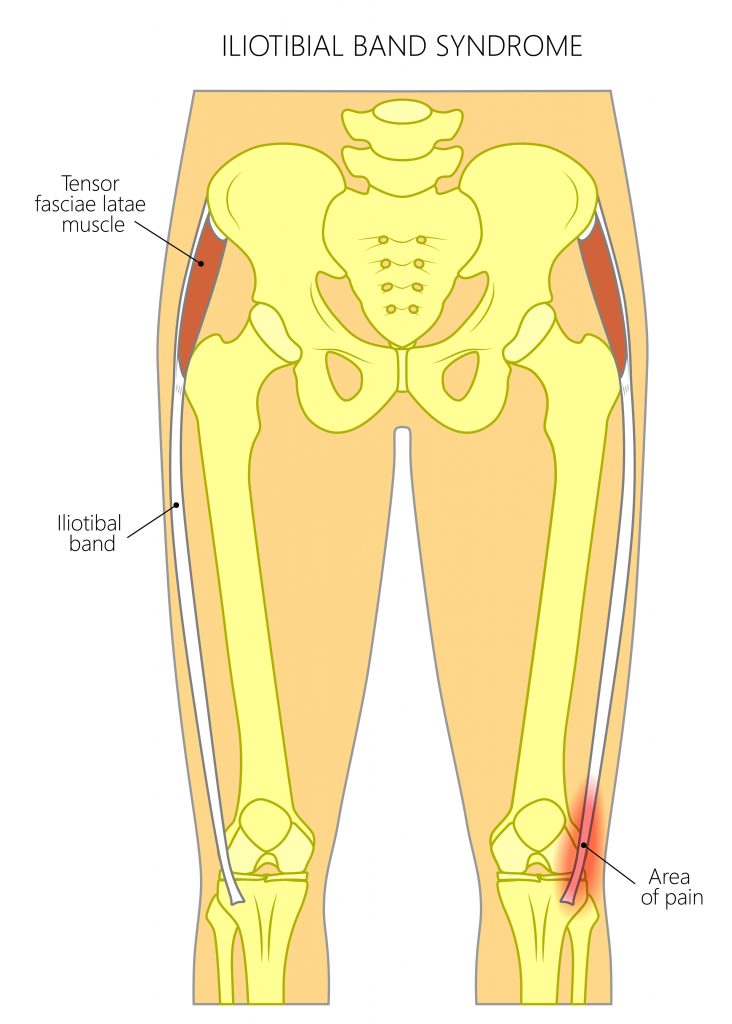
Piriformis Syndrome
The piriformis is a muscle is located deep to the gluteals. The main nerve of the leg (sciatic nerve) runs very close to the piriformis. Irritation of the sciatic nerve from the piriformis can result in nerve symptoms including pins and needles, numbness and weakness and pain into the buttock and down the back of the leg. Similar symptoms can also arise from the lumbar spine, it is important to identify the source of the symptoms to direct treatment.
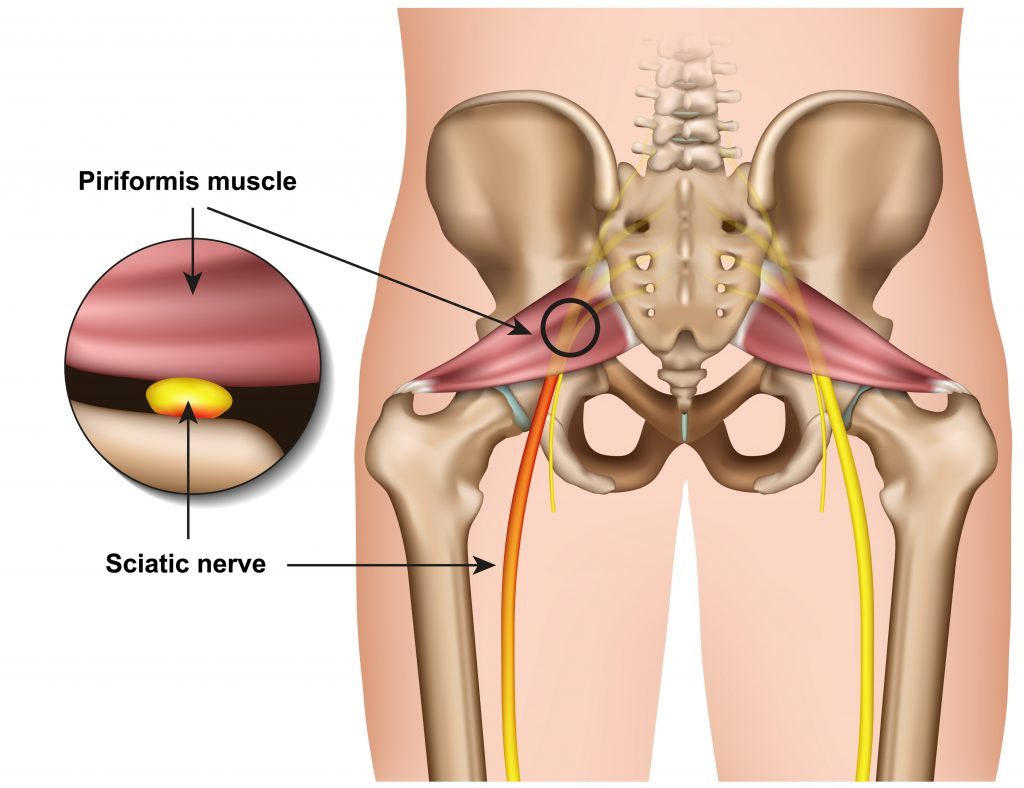
Hip Flexor Strain (Iliopsoas)
The hip flexors are a group of muscle located at the front of the hip and assist with lifting the leg (i.e. marching motion). Injuries can be due to inactivity (i.e. sedentary occupation), overuse (i.e. playing sport) or sudden trauma (i.e. leg suddenly slipping backwards).
This can give rise to pain and stiffness over the front of the thigh and groin. Symptoms can include pain/weakness with swinging motions of the leg (i.e. kicking, running), pain striding out (i.e. walking fast, sprinting), stiffness with prolonged sitting and pain/weakness with lifting the leg.
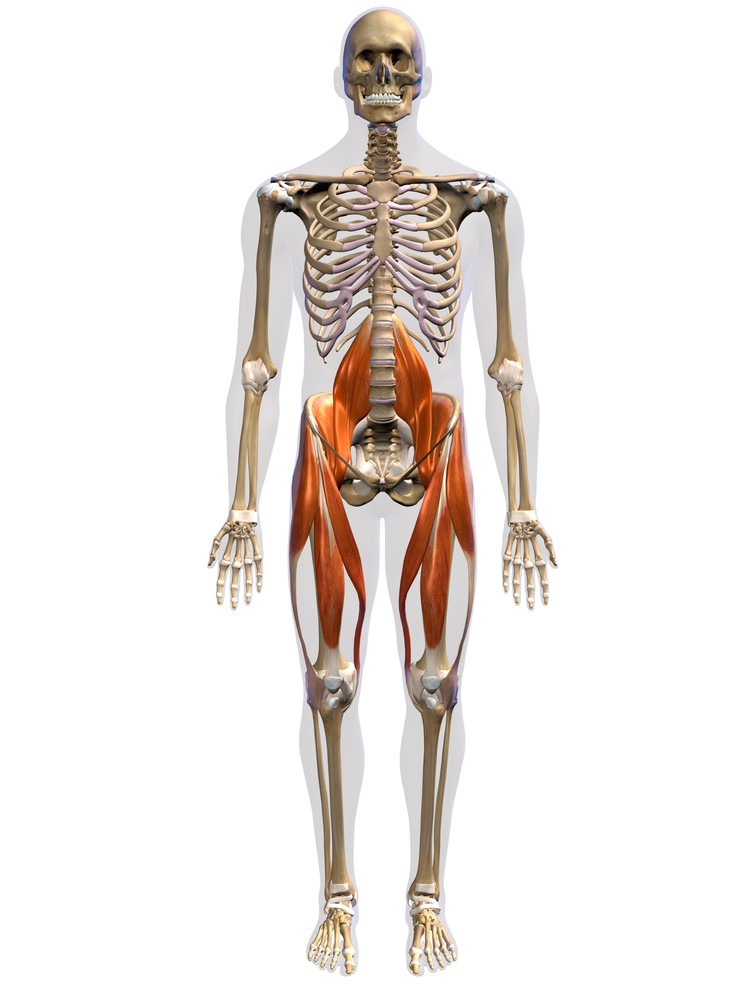
Common Hip Injuries- Iliopsoas Bursitis
A bursa is a fluid filled sac found in areas of the body where a tendon or muscle rubs over a bone. The function of a bursa is to decrease the amount of friction, if the bursa becomes inflamed it can swell causing compression and pain in the surrounding anatomical structures.
Behind the iliopsoas muscle lies a large burse, this decreases the friction between the muscle and pelvic bone. Repeated running and kicking motions can give rise to irritation and inflammation of the bursa. Symptoms can include a deep ache into the front of the groin, pain with lifting the leg (i.e. marching position), snapping sensation, pain with crossing the legs .
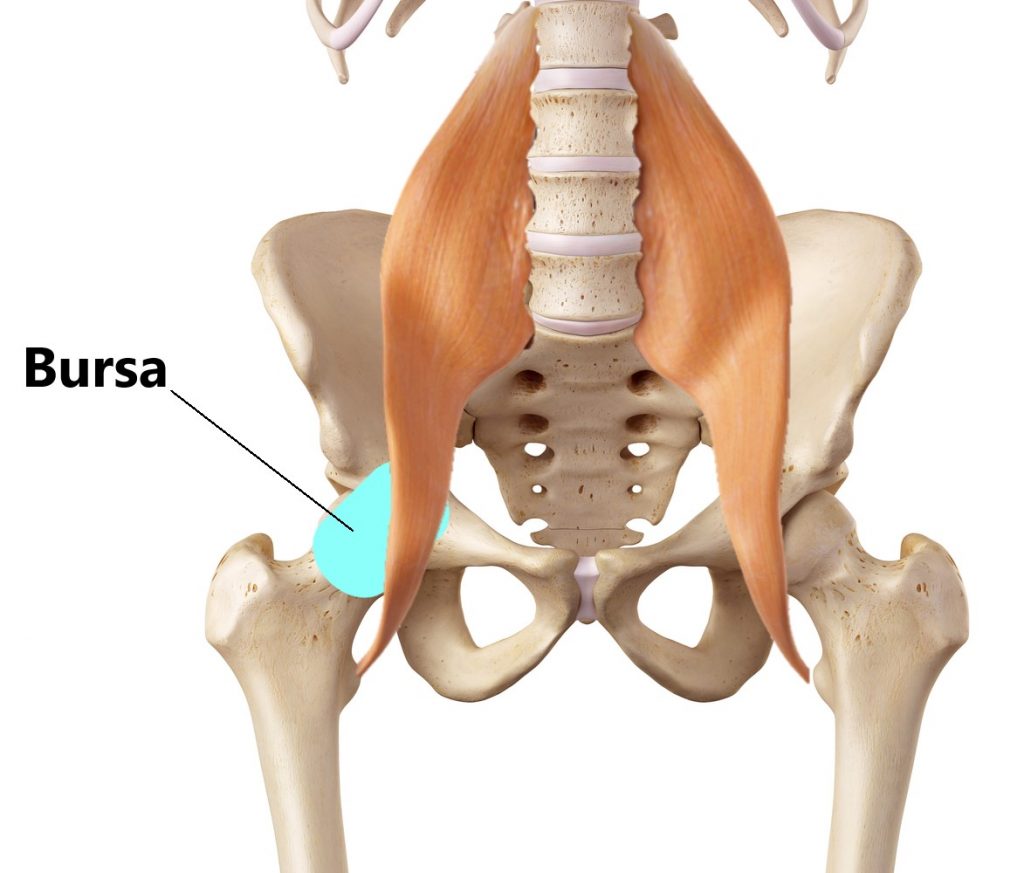
Common Hip Injuries- Osteoarthritis
The hip is a deep ball and socket joint, wearing away of the joint surfaces (cartilage) will eventually lead to osteoarthritis. Symptoms can include painful and restricted hip movements +/- audible creaking, groin pain, marked morning stiffness and difficulty standing from a seated position. A total joint replacement should be considered in situations where there is advanced hip OA and a significant deterioration in an individual’s quality of life.
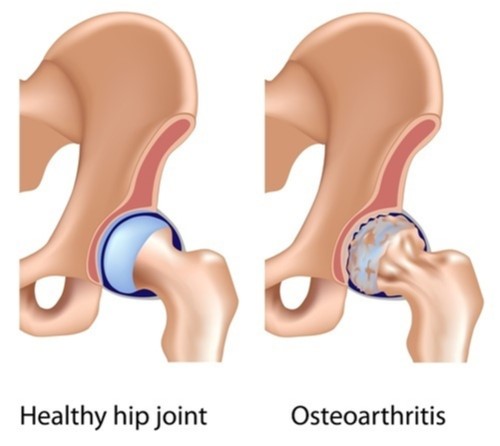
Common Hip Injuries- Labral Tear
Surrounding the outer rim of the hip socket is a ring of cartilage called the labrum. The labrum provides additional stability and enables smooth movement. Tearing and fraying of the labrum can occur as a result of trauma (i.e. dislocation, suddenly doing the splits), repeated pivoting, repeated joint hyper flexion/extension (i.e. dancing, AFL) or anatomical abnormalities of the hip joint (i.e. FAI see below).
Symptoms can include movement restrictions +/- joint clicking/locking/catching, groin and buttock pain and pain during and after activity.
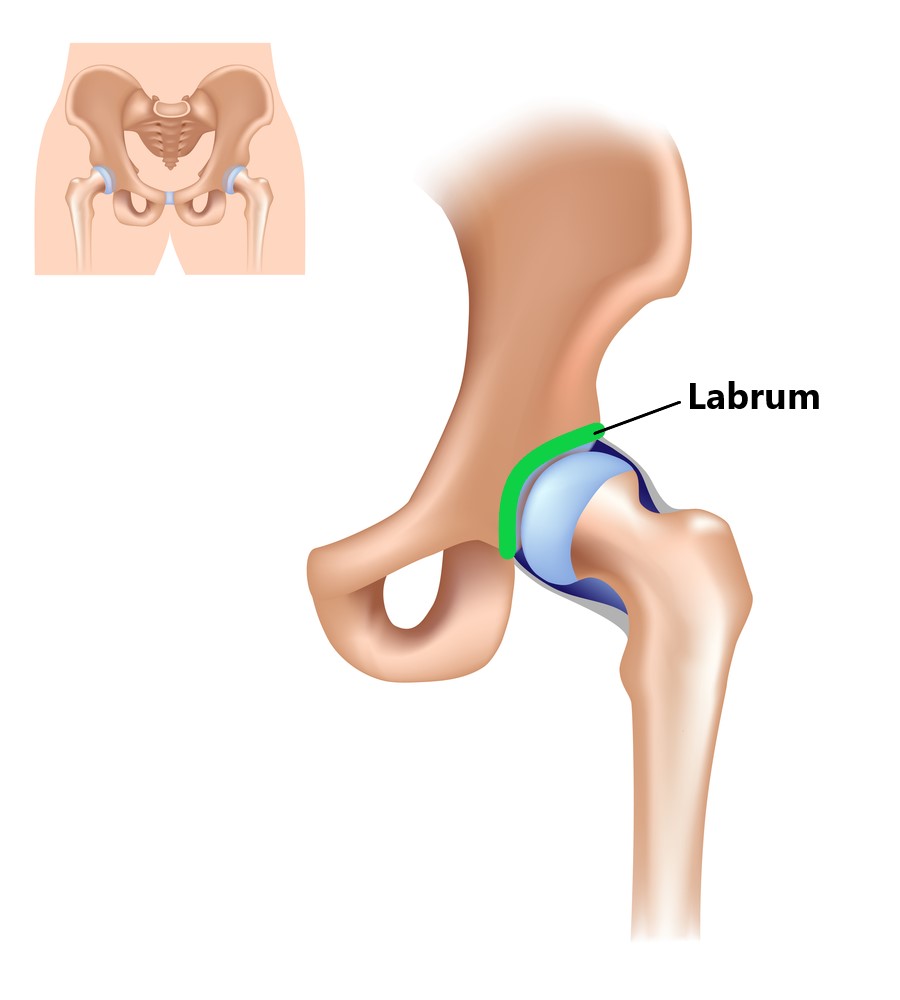
Common Hip Injuries- Femoral Acetabular Impingement (FAI)
FAI is a condition where the ball and socket joint do not properly fit together due to extra bone growth. This can be due to additional growth on the ball (cam impingement), the socket (pinch impingement) or both (combined impingement). Causes and symptoms of FAI can be very similar to a labral tear (as above). Imaging (i.e. x-ray, CT and MRI) is often required to confirm this diagnosis.
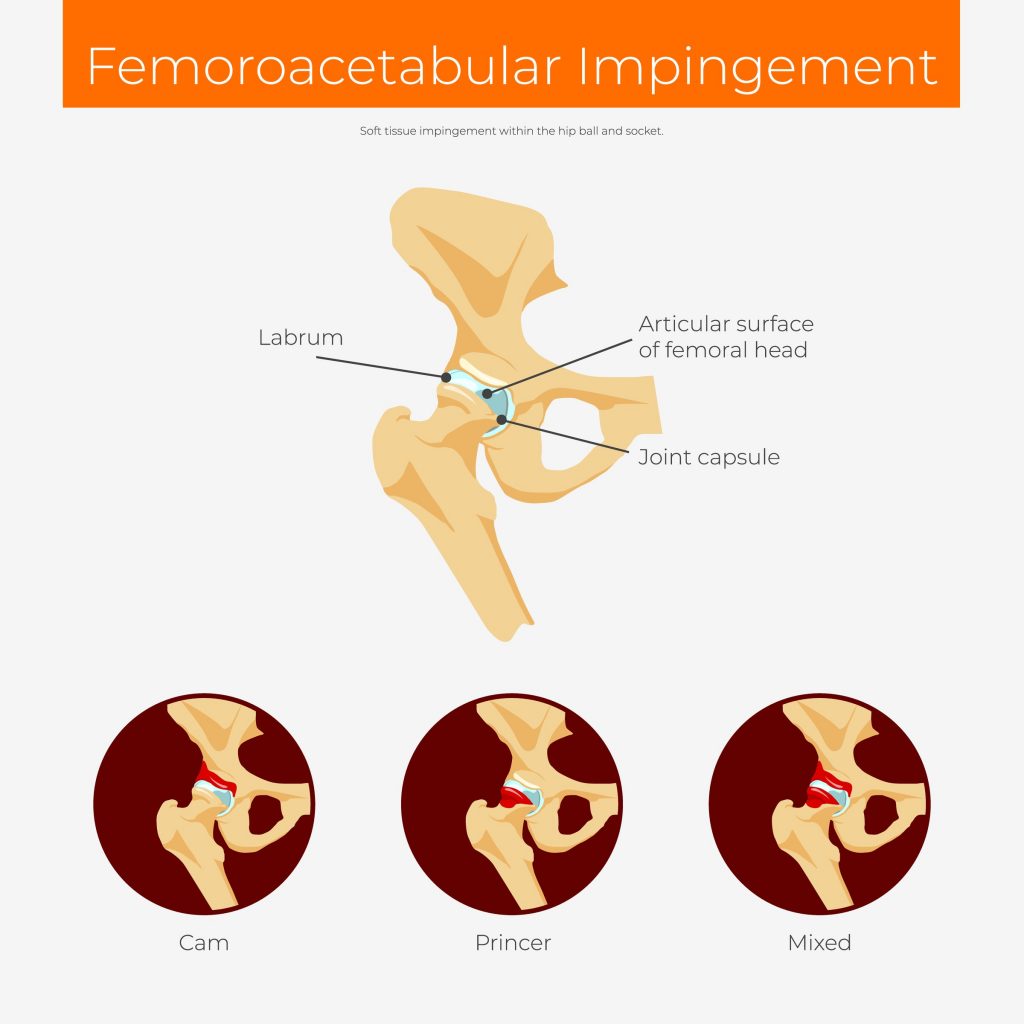
Common Hip Injuries- Hamstrings Tendinopathy
The upper hamstrings tendon attaches onto the pelvis near the base of the buttock region. Inflammation and thinning of this tendon can give rise to buttock pain and/or posterior thigh pain.
Symptoms can include pain associated with bending forwards, climbing stairs, walking up slopes and kicking motions. Similar symptoms can also arise from the lumbar spine, it is important to identify the source of the symptoms to direct treatment.
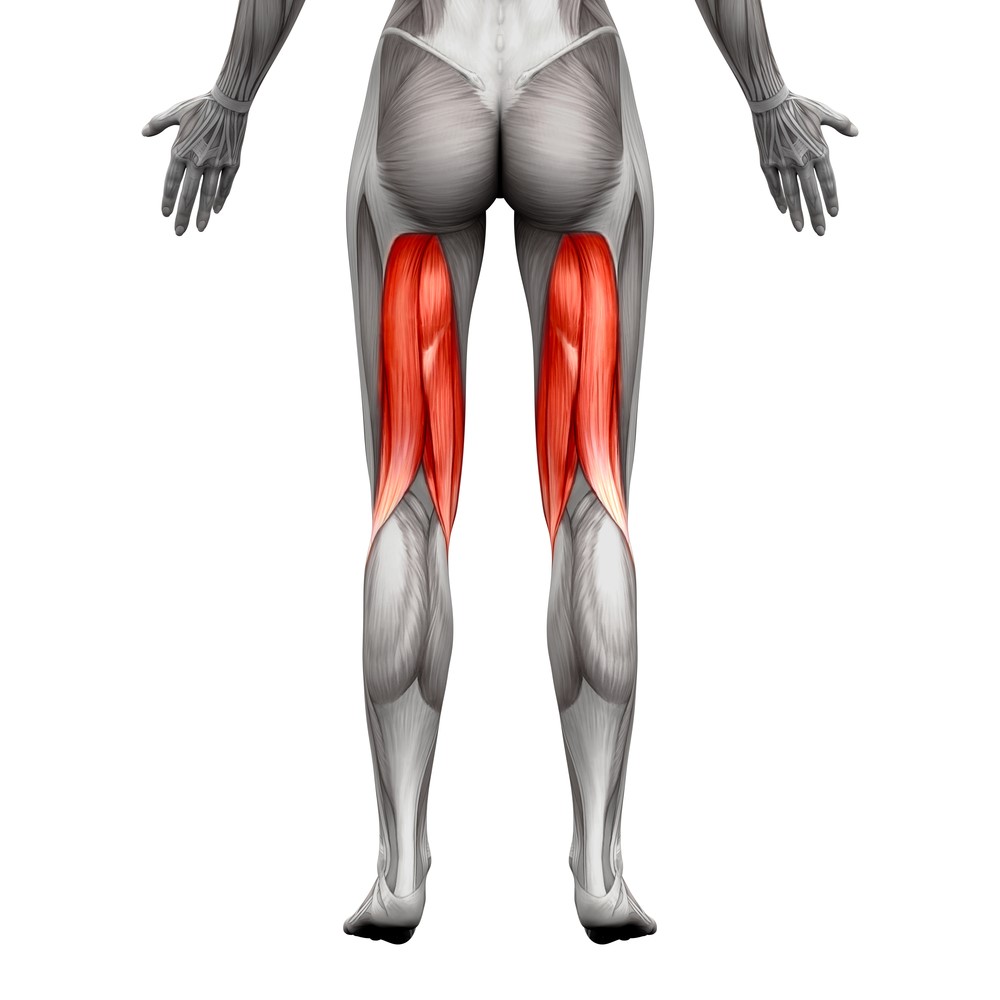
Please keep in mind the information provided is general in nature and should not be used as a substitute to consult your treating health professional. If you have any specific questions or require assistance with your individual treatment requirements please do not hesitate to contact MyFamily Physio Mona Vale, Northern Beaches Sydney.
Related Articles